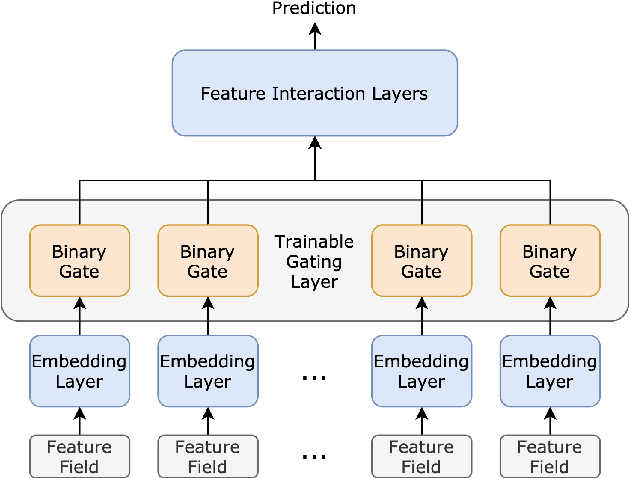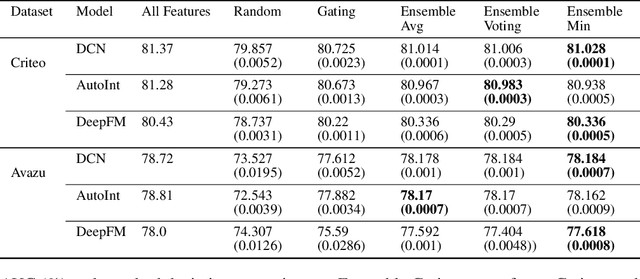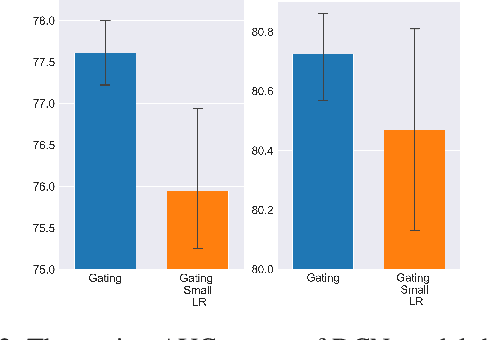Enhanced Exploration in Neural Feature Selection for Deep Click-Through Rate Prediction Models via Ensemble of Gating Layers
Paper and Code
Dec 07, 2021



Feature selection has been an essential step in developing industry-scale deep Click-Through Rate (CTR) prediction systems. The goal of neural feature selection (NFS) is to choose a relatively small subset of features with the best explanatory power as a means to remove redundant features and reduce computational cost. Inspired by gradient-based neural architecture search (NAS) and network pruning methods, people have tackled the NFS problem with Gating approach that inserts a set of differentiable binary gates to drop less informative features. The binary gates are optimized along with the network parameters in an efficient end-to-end manner. In this paper, we analyze the gradient-based solution from an exploration-exploitation perspective and use empirical results to show that Gating approach might suffer from insufficient exploration. To improve the exploration capacity of gradient-based solutions, we propose a simple but effective ensemble learning approach, named Ensemble Gating. We choose two public datasets, namely Avazu and Criteo, to evaluate this approach. Our experiments show that, without adding any computational overhead or introducing any hyper-parameter (except the size of the ensemble), our method is able to consistently improve Gating approach and find a better subset of features on the two datasets with three different underlying deep CTR prediction models.
 Add to Chrome
Add to Chrome Add to Firefox
Add to Firefox Add to Edge
Add to Edge